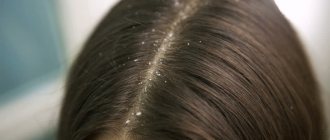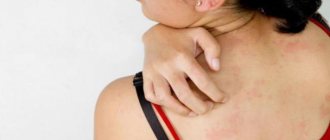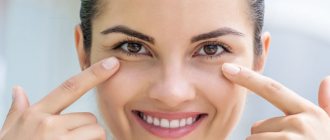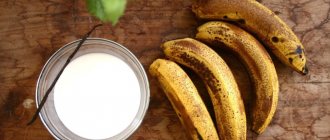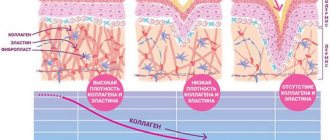From this article you will learn:
- What is itchy skin?
- How does senile skin itching manifest?
- What are the causes of senile itchy skin?
- What is the treatment for senile itchy skin?
- What are some folk remedies for senile itchy skin?
Elderly people in our country make up a rapidly growing part of the population. In this category of citizens, one of the most common skin problems is senile itching. With age, a large number of different changes occur in the body. Elimination of senile skin itching is a pressing therapeutic problem of our time. The etiology of this disease is very diverse. This article will help you navigate the causes of senile skin itching and how to treat it.
Senile itch
Age-related changes affect all human organs, including the skin.
In older people, the skin becomes thinner, dries out, and becomes sensitive to allergens and mechanical irritants. These factors, as well as various diseases of internal organs and systems, cause the so-called senile itch - an unpleasant sensation that can be constant or occur periodically. Senile, or senile, itching can cover the entire body or only certain areas. The pathological condition is accompanied by peeling of the skin. Most often, unpleasant sensations occur in the evening and at night.
How does itchy skin manifest in older people?
Itchy skin condition occurs mainly in older people over 60 years of age. Its symptoms: burning, tingling, general discomfort and other unpleasant sensations in the back area, especially near the spine, on the skin of the arms, legs, face and neck. Often itching occurs in the intimate area, mainly in women, less often in men.
Senile itching differs from skin itching caused by fungal, oncological diseases, and other pathologies of the body. Only specialists can identify the true causes of this disease during the diagnostic process, based on the results of which the correct course of treatment will be prescribed. That is why, when the first suspicious symptoms appear, you should consult a doctor.
The manifestation of the disease can be localized or generalized. In the first case, itching occurs in places of contact and friction on the skin of the back, shoulders, waist and groin area. In the second, unpleasant sensations of varying degrees of intensity appear throughout the body. Mild itching can develop into excruciating, reaching painful.
As a rule, symptoms intensify in the evening, especially annoying older people at night. In addition, the skin becomes dry and itchy more during the cold season when the home heating is on. Unpleasant symptoms also regularly occur after water procedures.
Senile itching usually does not give external signs of manifestation, although sometimes for this reason fine-plate peeling appears on the skin. The skin of older people has low firmness and elasticity (low turgor), for this reason there are also no marks from scratching.
Chronic senile itching causes considerable discomfort to pensioners, which often results in sleep disturbances, poor appetite, and increased irritability. However, senile itching differs from skin discomfort caused by other diseases and has characteristic symptoms. Among the main manifestations it is worth highlighting:
- frequently changing intensity of discomfort;
- intensification of symptoms in the evening and night;
- atypical areas of manifestation with scratching and risk of infection;
- frequent combination of itching and pain;
- alternation of exacerbations with complete attenuation of symptoms, their prolonged increase.
Itching in older people may also indicate the presence of other diseases. The main diseases of the internal organs that cause this symptom:
- functional impairment of the liver, biliary dyskinesia;
- kidney diseases with manifestations of renal failure;
- oncological diseases;
- mental disorders and disorders of the nervous system.
When diagnosing, it is important to exclude other causes of itching sensations: dermatitis, scabies, lice, eczema, allergies to various irritants.
We recommend
“First aid for the elderly: what you need to know about it” Read more
Causes of senile itching
The main reason for the condition is natural aging of the body. As a person ages, the synthesis of hormones “responsible” for the elasticity of the skin decreases. Metabolism slows down, resulting in slower tissue regeneration. The skin becomes dry and wrinkled.
Several contributing factors increase the likelihood of aging itch. These include:
- gastrointestinal diseases;
- diabetes;
- renal failure;
- liver diseases;
- atherosclerosis;
- atrophy of the skin glands;
- cognitive disorders;
- violations of water-salt metabolism;
- dehydration.
Often, an unpleasant sensation can appear due to changes in air temperature, wearing synthetic clothing, swimming in too hard water or using products with an inappropriate pH level.
Possible complications
If medical prescriptions are strictly followed, the treatment prognosis is quite favorable. Symptoms that cause severe itching are reduced and the elderly person experiences relief.
The most common complication of the pathology manifests itself in the form of the following symptoms:
- Lack of appetite.
- Infection of itchy areas.
- Chronic insomnia.
- Irritability.
- Thinning of the skin in localized areas.
If complications arise, you should not self-medicate; you should immediately consult a dermatologist.
Symptoms of pathology
Characteristic signs help identify senile body itching:
- thinning and drying of the skin (skin becomes papery);
- the appearance of red spots, rashes, pustules on the body;
- absence of scratches and wounds in areas of the body that are prone to itching;
- itching worsens in the evening and at night;
- The duration of discomfort can range from several days to several months.
Sometimes patients may itch different parts of their body every day.
Diagnostics
With a similar problem, patients come to see a dermatologist. As a rule, the diagnosis is made based on a survey and examination.
For a more accurate diagnosis, the dermatoscopy method is used - studying the biomaterial using magnifying lenses.
In some cases, it is appropriate to conduct additional examination:
- take blood, urine and stool tests;
- test for allergens.
If the cause of the pathology is a disease of the internal organs, the patient is referred to a therapist or other specialized specialist who will supervise the underlying disease.
Preventive actions
Effective preventive measures will help minimize the occurrence of itching:
- Moisturizing the skin with special cosmetics.
- Proper nutrition.
- Avoiding underwear made from synthetic fibers.
- Avoiding prolonged exposure to the sun without sunscreen.
- Rejection of bad habits.
- Preventative examination once every six months.
Senile itching in old age is a fairly common pathology, the treatment of which should be approached comprehensively. This is the only way to eliminate discomfort and alleviate the condition of an elderly person.
How to treat?
The goal of therapy for senile skin itching is to relieve symptoms. Several techniques are used to alleviate the condition. The choice of treatment regimen depends on the cause that provoked the pathology and the nature of the manifestations.
Preparations for senile itching
The following types of drugs are used to treat senile itching:
- antihistamines (Diazolin, Diphenhydramine, Suprastin);
- neuroleptics (Promazine, Clozapine);
- immunostimulants (Cycloferon, Echinacea tincture);
- corticosteroids (Betazon, Betaderm, Kremgen);
- vitamin complexes;
- alcohol tinctures;
- pharmaceutical ointments and creams with a soothing and cooling effect (Fenistil, Clotrimazole, Menovazan, etc.).
Corticosteroid drugs are taken only as prescribed and under the supervision of the attending physician. In general, hormone therapy is used for patients with autoimmune diseases, with the doctor carefully weighing the benefits and risks of treatment for each patient.
If the cause of itching is stress and other cognitive conditions, the patient is prescribed mild sedatives: valerian infusion, Novopassit, etc.
You can quickly stop an attack with warm water. The itchy area is showered with water for a few minutes. Before water procedures, you can apply 2-3 drops of peach tree essential oil to the skin.
Body hygiene
When symptoms of senile itching appear, it is important to pay attention to hygiene. For bathing, you need to use soft products with a neutral pH, and if possible, wash with water that is not too hard.
When bathing, do not use hard washcloths or scrubs.
The patient's underwear and bedding should be made from natural fabrics.
Senile body itch and diet
If you have senile itching, you should exclude the following foods from your diet:
- grilled meat;
- marinades;
- baked goods;
- citrus;
- coffee;
- spices;
- alcoholic drinks.
The diet includes seafood, herbs, fresh vegetables, pumpkin seeds, nuts, and unrefined oils.
Folk remedies
Some types of senile itching can be successfully treated with folk remedies.
Traditional methods of treatment:
- herbal baths;
- applying vegetable oil to flaky areas;
- using homemade ointment made from aloe and Vaseline.
Before using unconventional recipes, you should consult your doctor.
Other techniques
For patients who experience itchy skin as a response to stress, it is very important to control their emotions. In such cases, it is useful to do yoga, auto-training, and use various relaxation techniques.
How and with what to treat senile skin itching
It should be remembered that without consulting a specialist, it is unacceptable to use any means to treat senile itching of the skin. The set of therapy methods listed below is provided in order to familiarize yourself with the general picture of the disease and the processes of its elimination.
Phototherapy
Narrowband or broadband ultraviolet therapy has been used to treat various dermatoses for over thirty years. This method avoids many side effects that occur when using pharmacological drugs, and is preferable for older people. This therapy also addresses physical and cognitive limitations that may interfere with the treatment plan. This increases the risk of phototoxicity.
Antihistamines
These medications have almost no effect on senile skin itching . Antihistamines have a certain positive effect only with chronic manifestations of urticaria. Some effect may be observed during nocturnal attacks of itching if first generation products are used, as they have a mild hypnotic effect. However, one should remember the dangers of using such medications in old age due to the possibility of excessive drowsiness.
Neuroleptics
This group of drugs should be used with caution. Pregablin and gabapentin are used to treat senile itchy skin. Although the mechanism of their action is not fully understood, in some cases positive results of this therapy are observed. Perhaps this reaction of the body occurs due to the inhibition of the central pathways of itching by neuroleptics. A persistent positive effect is observed in patients with neuropathic itching, which is associated with brachioradinal itching and postherpetic neuralgia.
The use of hebapentin can stop the course of the disease in kidney pathologies and lymphoma, but at the same time has a negative effect on itching in people with cholestasis.
Menthol
Menthol 1-3% has the same effect as low temperature through the TRPM8.12 receptor. It helps to cool the skin, which, as already mentioned, alleviates the patient's condition with senile itching. However, menthol does not affect body temperature. Patients who notice a decrease in itching when the skin cools are recommended to prescribe medications containing this substance.
Capsaicin
Capsiacin has a positive effect on chronic, localized pruritic diseases, especially those of neuropathic origin. These include the conditions of postherpetic neuralgia and brachioradial pruritus. Capsitocin should be used with caution due to the large number of known side effects (more than 15). The most common of these is a burning sensation, which can cause deterioration of the condition, especially in an elderly person.
Local anesthetics
For patients using hemodialysis, the drug Pramoxine, which belongs to the group of local anesthetics, will help relieve itching. It improves the condition by transmitting impulses along sensitive nerve fibers. A combination of urea (5%) and polidocanol (3%) reduces senile skin itching in atopic and contact dermatitis and psoriasis.
Salicylic acid
This remedy can be used locally for lichen lesions of the skin. This is most likely due to the inhibitory nature of its effect on prostanoids. It should be noted that oral medications do not have an itching-reducing effect, except in cases of polycythemia vera.
Moisturizing, softening and protective creams
Creams with a moisturizing, softening and protective effect are the basis for the treatment of senile skin itching. They eliminate the most common symptom of the disease – dryness. These are not medications; they act on the skin, restoring its protective function, helping to avoid transepidermal loss of moisture and reduce the penetration of scabies and other irritating elements into the body. To restore the skin barrier, creams with a low pH level are very useful, since they have the ability to reduce the activity of serine proteases, such as mast cell tryptase, which stimulate protease-activating receptor 2 (Par2) of the skin nerve fibers.
Topical corticosteroids
These drugs do not have a direct antipruritic effect, but have an antiphlogistic effect. Therefore, it is worth prescribing corticosteroids in cases of dermatoses that are inflammatory in nature, such as psoriasis and coin-shaped dermatitis. A group of selected corticosteroids cannot be used for long-term treatment, as well as for the treatment of generalized chronic itching, since excessively long-term use of these drugs has a negative impact on the health of older people.
Topical immunomodulators
Calcineurin, tacrolimus and pimecrolimus, which are local inhibitors, have a positive effect in cases where senile skin itching is of the nature of seborrheic or chronic dermatitis, scabies and anogenital itching. Despite the fact that these drugs cause a burning sensation, they are indicated for older people who are not at risk of epidermal atrophy.
Antidepressants
In patients with chronic renal pathologies, cholestasis, as well as late-stage cancers such as lymphoma, cutaneous lymphoma, leukemia, serotonin and norepinephrine reuptake inhibitors can reduce itching. These include mirtazapine. The drug has a positive effect in the treatment of attacks of night itching. Selective serotonin reuptake inhibitors also have an antipruritic effect. For atopic dermatitis, systemic lymphoma and solid carcinoma, the SSRIs paroxetine and fluvoxamine are effective. For senile itching of the skin associated with chronic liver diseases, sertraline is indicated.
If the itching is psychogenic, antidepressants are also suitable. Elderly people are advised to start taking them with small doses, as such drugs can cause many side effects.
Popular questions about senile itch
Can it develop in young people?
Young people may also suffer from itchy skin, but the term “senile itch” is not applied to them.
Where is itching most often located?
The localization of pathology is individual. The patient may itch the whole body or individual areas, and it may be different every day.
Which doctor treats senile itch?
If unpleasant symptoms appear, you should consult a dermatologist. If the patient has a history of chronic diseases, you should also visit a specialized specialist.
Treatment
First of all, it is necessary to undergo an examination that will identify possible causes of itching, and based on the diagnostic results, certain medications with local symptomatic action or systemic medications aimed at eliminating the primary disease will be prescribed. Physiotherapy can also help, as it helps normalize the functioning of the immune system and improves metabolic processes, as a result of which skin hydration returns to normal.
Medications can include gels, ointments or tablets, which are selected depending on the patient’s age, diagnosed disease and severity of symptoms:
- Local ointments and creams (Fincoderm, Fenistil, Oxolin, Clotrimazole). They are recommended to be applied regularly for chronic and prolonged symptoms of itching. You can also reduce discomfort by using ointments containing menthol: thanks to the cooling and soothing effect, such drugs will temporarily eliminate itching.
- Antihistamines (Erius, Suprastin, Zyrtec, Tavegil, Loratadine). Such remedies reduce irritation and pain.
- Antidepressants. Such medications are prescribed individually and only in cases where itching occurs due to stressful conditions.
- Neuroleptics (Promazine, Serdinol, Gabapentin, Carbidine, Clozapine). These remedies are relevant for age-related itching that occurs as a result of the progression of diseases of the nervous system.
- Immunostimulants (Echinacea, Cycloferon, Tsitovir).
- Vitamin complexes.
In parallel with drug treatment, you can relieve symptoms of itching with the help of a shower. To do this, just direct a stream of warm water to the irritated areas or stand in the shower for several minutes (the water should be warm). Before the procedure, it is recommended to rub the skin with essential peach oil to enhance the effect.
Folk remedies
Such treatment cannot be a complete replacement for drug therapy, but can complement it or be used in the absence of the opportunity to purchase the necessary drugs. Effective traditional medicine for itchy skin are:
- Baths with herbal teas. It is necessary to mix birch buds, chamomile, celandine and oak bark (all herbs in dried form) in equal proportions, and pour one hundred grams of the resulting mixture into 2 liters of boiling water. After two hours of infusion, the strained composition is poured into a filled bath, in which it is necessary to spend 20-30 minutes. You need to take such baths every day.
- Vegetable oil. Any type of vegetable oil can be used for lubrication twice daily.
- Aloe. Freshly cut and peeled aloe leaves are squeezed through gauze, and the resulting juice is mixed with petroleum jelly in a ratio of 1 to 2. Itchy areas are treated with this mixture 2-3 times a day.
Folk remedies may not only be less effective than medications, but can also cause allergic reactions or increase itching, so you should consult a therapist and dermatologist before such treatment.
